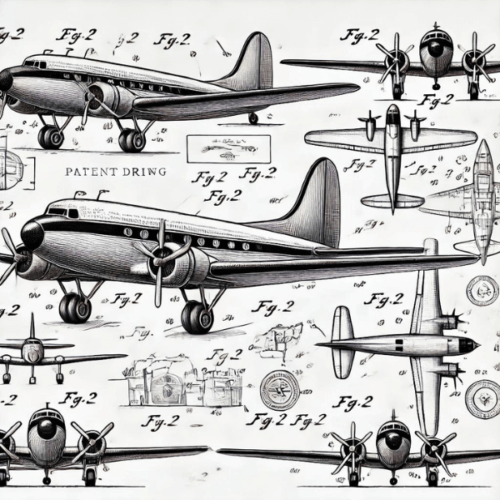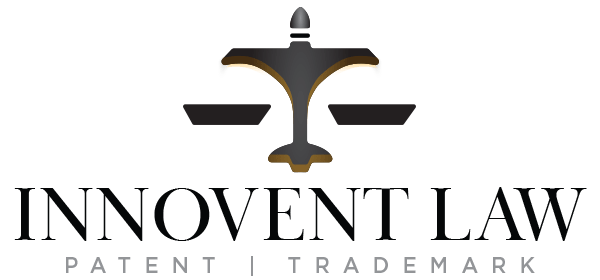Learn How to Prepare Your Drawings for Your Utility or Design Patent Registration
Drawings are a critical part of the patent application process. They visually represent your invention, helping the patent examiner understand its unique features. Whether you’re filing a utility or design patent, well-prepared drawings can make a significant difference. This guide will walk you through everything you need to know about creating effective patent drawings for your patent registration.
What Are Patent Drawings?
They are illustrations that accompany a patent application to visually describe the invention. These drawings help clarify the written description and patent claims and are often crucial in conveying the nuances of an invention that text alone cannot capture.
For utility patents, drawings show how the invention works or is constructed. For design patents, drawings depict the appearance and ornamental design of a manufactured item. High-quality drawings can strengthen your patent application by clearly communicating your invention’s features and preventing misunderstandings during the examination process.

Key Requirements
The USPTO has specific requirements for drawings to ensure clarity and consistency. Here are some key requirements you must follow:
- Black and White Only: They must be in black and white. While colors can sometimes be allowed, this is rare. If you’re wondering, “Can patent drawings have color?” the answer is usually no. However, on rare occasions, color drawings are permitted if they are the only practical medium to illustrate the invention.
- Quality and Clarity: Drawings must be clear and legible, with lines that are dark and well-defined. Shading can be used to show contours and depth.
- No Text in Drawings: Except for flowcharts and specific cases, text should not appear in the drawings. This ensures the focus remains on the visual representation of the invention.
- Use of Symbols and References: Your drawings should include reference numbers that correspond to parts of the invention described in the written description . This helps the examiner easily connect the written description to the visual elements.
For more detailed information on the USPTO’s drawing requirements, visit their official guidelines here.
Patent Drawings vs. Figures: What’s the Difference?
Many people use the terms “patent drawings” and “figures” interchangeably, but they have distinct meanings. Patent drawings are the illustrations submitted with a patent application, while figures refer to the individual illustrations or views within the set of patent drawings.
For example, a patent drawing may contain multiple figures showing different views or aspects of the invention, such as top views, side views, or cross-sectional views. Understanding this distinction is crucial when preparing your patent application to ensure you meet all requirements.
Common Mistakes
Even minor errors in patent drawings can lead to delays or rejections. Here are some common mistakes to avoid:
- Incorrect Scale or Proportion: Patent drawings must accurately represent the size and proportion of the invention. Inaccurate scaling can mislead the patent examiner.
- Lack of Detail: Omitting essential details or not providing enough views can result in incomplete drawings that fail to fully disclose the invention.
- Improper Shading or Line Weight: Shading should be used appropriately to indicate different materials or depths. Lines should be consistent and clear to ensure readability.
- Inconsistency between Written Description and Drawings: Inconsistency numbering of elements in the written description and patent drawings can confuse the examiner and delay the examination process.
By being aware of these common pitfalls, you can take steps to avoid them and ensure your drawings meet all necessary standards.
How to Create Effective Patent Drawings
Creating effective drawings involves more than just good sketching skills. Here are some essential tips to keep in mind:
- Use Professional Software: Consider using specialized patent drawing software to create precise and compliant drawings. Software like AutoCAD or Adobe Illustrator can be helpful, but there are also patent-specific programs designed to meet USPTO standards.
- Follow All Guidelines: Always adhere to USPTO guidelines regarding dimensions, views, and references. Deviating from these standards can result in rejection or delay of your application.
- Hire a Professional Draftsman: If you’re not confident in your drawing abilities, hiring a professional patent draftsman can be a wise investment. They are experienced in creating patent-compliant drawings that effectively communicate your invention.
- Include Multiple Views: Provide different perspectives of your invention to ensure that all features are clearly depicted. This includes front, back, top, and side views, as well as exploded views or cross-sections if necessary.
Why Are They Important?
They play a crucial role in the patent examination process. They provide a visual representation that complements the written description, helping the patent examiner better understand the invention. A well-drafted drawing can clarify complex ideas and prevent misunderstandings that could confuse the examiner and even lead to a rejection. In some cases, the clarity and detail provided by the drawings can be the deciding factor in the approval of a patent application.
Patent Drawing Examples and Best Practices
To better understand what’s expected, reviewing sample patent drawings can be incredibly helpful. These examples provide insight into the level of detail and clarity needed for a successful patent application. For instance, a well-executed drawing for a design patent clearly shows the unique appearance of the item, while a drawing for a utility patent illustrates how an invention is constructed and how the invention functions.
Take the time to look at patents from companies like Apple or Google. Their patent drawings are not only detailed but also follow all the guidelines set by the USPTO. By analyzing these patent drawing examples, you can learn what works and apply those techniques to your own patent application.
Can Software Architecture Be Patented?
Yes, software architecture can be patented if it meets specific criteria. When it comes to drawings, software patents often include flowcharts and diagrams that represent the architecture of the software. These drawings help explain how the software works and interacts with hardware or other software components.
If you’re filing a patent for software architecture, make sure your drawings clearly outline the process flows, data structures, and interactions. Use symbols and labels to enhance understanding and provide a comprehensive view of the software’s functionality.
Steps to Prepare Your Drawings for Your Patent Application
To prepare your drawings effectively, follow these steps:
- Determine the Type of Patent: Decide whether you are applying for a utility or design patent, as this will dictate the type of drawings you need.
- Gather Necessary Materials: Collect all the tools or software needed to create your drawings. This includes professional drawing software or access to a patent draftsman.
- Create Initial Sketches: Draft initial sketches of your invention, focusing on capturing all essential features.
- Review and Refine: Review your sketches to ensure they meet USPTO requirements and clearly represent your invention.
- Finalize Drawings: Finalize your drawings, making sure they are clear, accurate, and compliant with all guidelines.
Final Thoughts
Preparing your own can save money, but it requires a thorough understanding of USPTO requirements. If you’re unsure about your ability to create compliant drawings, it may be worth hiring a professional. High-quality drawings can make a significant difference in the success of your patent application.
For more information on when to patent an invention and the different types of patents, visit our pages on When to Patent an Invention, Utility Patents, and Design Patents. If you have any questions or need assistance, don’t hesitate to contact Innovent Law.
